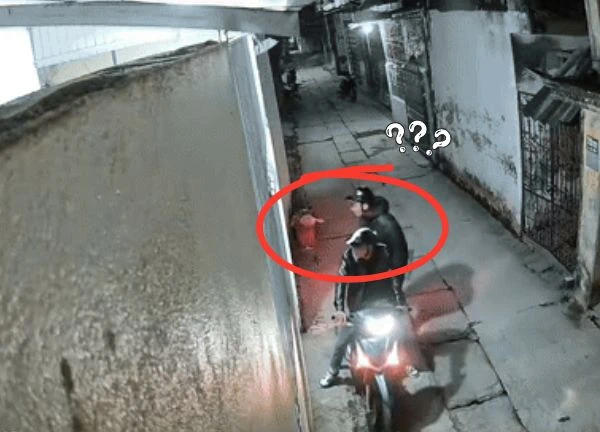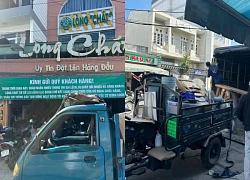Chinese cigarett.e imports: foreign traders say 'unprecedented'?

4 | 0 Discuss | Share
Recently, social media has appeared a clip about the interference incident of a Vietnam Airlines plane, causing a stir in public opinion. The scene shows many unfinished meals of passengers lying on the floor.
Fortunately, the above incident did not cause any human damage. Many people who directly participated in the flight were scared because it was the first time they experienced this scene in their lives. So how dangerous is the aircraft turbulence incident?
Turbulence is a fairly common occurrence on flights – when passengers feel suddenly unsteady on their journey. While there are occasional reports of turbulence in the news, which can make people worry about safety, in reality, injuries caused by turbulence are rare.
According to data from the US Federal Aviation Administration (FAA), from 2009 to 2021, there were only about 5-18 serious injuries related to turbulence recorded each year. The FAA defines turbulence as "air movement caused by atmospheric pressure, jet streams, terrain such as mountains, weather fronts or thunderstorms."
Simply put, it is when the air is "disturbed" like the surface of a rippling sea, causing the plane to shake. This phenomenon occurs not only in air, but also in other liquids such as water, bloo.d in the body, or even in plasma on the surface of the Sun.
Turbulence is a natural physical phenomenon characterized by chaos and sensitivity to small changes. For example, changes in temperature or terrain (such as mountain ranges) can cause the air to fluctuate greatly. It is precisely this chaotic nature that makes turbulence difficult to predict. However, turbulence is not enough to cause a plane to crash.
“Turbulent air is normal — it’s part of the sky,†commercial pilot Patrick Smith told The Washington Post. “It happens on almost every flight. For the crew, it’s a matter of comfort, not safety.â€
Modern aircraft are designed to withstand enormous stresses. According to Professor Darren Ansell (University of Central Lancashire), "even in very severe turbulence, aircraft do not exceed their design limits."
Mr. Graham Gratton, Associate Professor of Aviation & Environment at Cranfield University (UK), affirmed: "Aircraft are designed to withstand the worst situations that turbulence can cause. There is almost no chance of turbulence seriously damaging or destroyin.g the aircraft."
Still, he stressed that turbulence is not something pilots want to deal with. "It does not benefit the flight. That's why pilots always try to avoid or reduce speed when flying through turbulence, and turn on the seatbelt sign for passengers."
Commercial aircraft typically fly above these weather patterns to avoid frequent turbulence. However, turbulence can occur at many different altitudes.
Although rare, turbulence-related accidents do occur—like the 1966 Mount Fuji plane crash, which was caused by a combination of human error and weather. But experts say today’s aircraft are much safer and are almost impossible to crash due to normal turbulence. In some extreme cases, the plane can suddenly dive, causing the pilot to temporarily lose control. But the main danger comes from passengers not wearing seat belts, which can cause them to be thrown from their seats and hit the ceiling or other hard objects.
In December 2022, a Hawaiian Airlines flight from Phoenix, Arizona to Honolulu, Hawaii, experienced severe turbulence that injured 25 people. According to Hawaiian Airlines, the flight was carrying 278 passengers. The turbulence was so severe that it damaged the interior of the plane. In 2021, an American Airlines flight en route to Florida was diverted to Louisiana after turbulence injured 10 people on board.
In 2019, at least 35 people were injured after an Air Canada flight from Toronto, Canada to Sydney, Australia encountered sudden turbulence and was forced to land in Honolulu.
That's why the FAA recommends: Always fasten your seat belt when seated, even when the plane is flying smoothly. That's why seat belt signs are always present above each row of seats.
If you are worried, here are some tips to make your flight smoother when experiencing turbulence: Choose a middle seat, near the wing if possible, as this is the area with the least turbulence. Always wear your seat belt. This will keep you safe if there is sudden turbulence. Secure your personal belongings. To avoid items flying around and causing injury.
Remind yourself: Planes are designed to fly through turbulence, turbulence-related injuries are rare, and best of all, turbulence doesn't crash planes.
Previously, Vietnam Airlines had encountered two incidents. Flights VN1207 and VN1269 with two planes encountered problems and had to land immediately after takeoff. On May 21, according to information from the Northern Airports Authority, Vietnam Airlines flight VN1207 from Hanoi to Can Tho encountered a problem 20 minutes after departing from Noi Bai airport on the afternoon of May 19.
The Airbus A321 aircraft that operated this flight took off at 17:16. However, at 17:37, the crew requested to return to Noi Bai airport due to cracks in the cockpit glass in front of the co-pilot's seat. The aircraft then landed safely and taxied to its parking position at 18:05.
The plane's inspection technician discovered another 40cm diameter dent on the plane's nose cone, made of composite plastic. The cause of this dent is still unknown.
Vietnam Airlines transferred passengers to another Airbus A321 to continue the journey to Can Tho, departing at 7:30 p.m. the same day.
On the same night of May 19, flight VN1269 from Vinh to Tan Son Nhat also encountered a similar situation when landing at 11:28 p.m. The cockpit window in front of the captain's seat was cracked and showed signs of bloo.d. The mechanic said the cause could be a collision with a bird, however, the time of the collision was not determined. The plane was then towed back to the workshop for inspection and replacement of the cockpit window.
According to aviation authorities, both incidents were unavoidable, often caused by hail or bird strikes. Incidents involving bird strikes or hail that crac.k cockpit windows are not uncommon in the aviation industry. Although airports have bird repelling devices, the collisions usually occur outside the airport, during the approach or departure of the aircraft. Incidents of cockpit glass cracking due to hail often occur during flights during the transitional weather period, when there are strong thunderstorms.
G-Dragon 'drops hint' of coming to Hanoi, Vietnamese netizens compete to 'bloom' something to welcome 'Mr. Long'  Hoàng Anh09:06:54 15/05/2025The news that G-Dragon will perform at My Dinh Stadium, Hanoi on June 21, announced on all social media platforms, quickly created an earthquake in the music-loving community.
Hoàng Anh09:06:54 15/05/2025The news that G-Dragon will perform at My Dinh Stadium, Hanoi on June 21, announced on all social media platforms, quickly created an earthquake in the music-loving community.

4 | 0 Discuss | Share

4 | 0 Discuss | Share

1 | 0 Discuss | Share

1 | 0 Discuss | Share

1 | 0 Discuss | Share

3 | 0 Discuss | Share

9 | 0 Discuss | Share

5 | 0 Discuss | Share

1 | 0 Discuss | Share

3 | 0 Discuss | Share

2 | 0 Discuss | Share

4 | 0 Discuss | Share










0 | 0 Discuss | Report